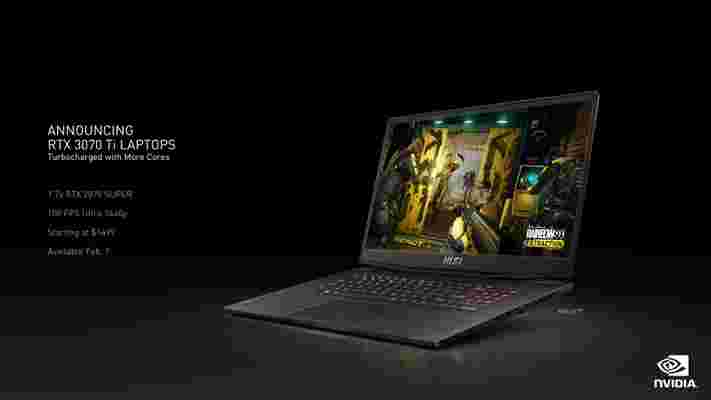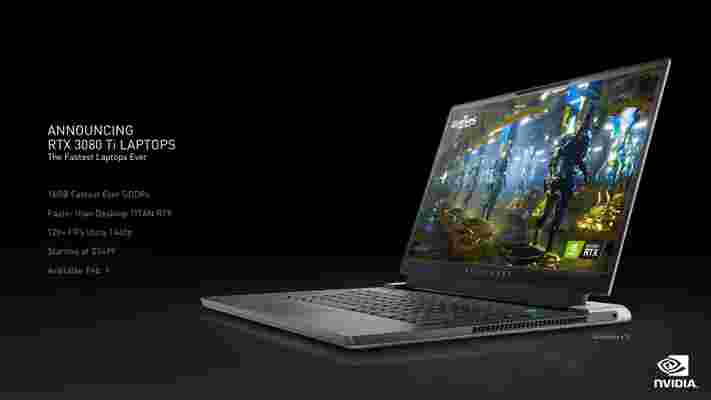If you’re a mobile photographer then you might already be using FiLMiC Firstlight – a camera app from the makers of the FiLMiC Pro video app. If not, there’s never been a better time to start, as it’s just got even better – especially if you have an Apple Watch .
That’s because version 1.3 of FiLMiC Firstlight has now launched, and the headline feature is support for the Apple Watch. This is through a companion app that lets you take photos directly from your wrist.
So in other words it’s a remote shutter control, meaning you can line a shot up on your phone and then use your Apple Watch to snap the picture, which you might want to do if for example you intend to be in the shot and some distance away from your phone, or if you just don’t want to risk camera shake from tapping the phone.

As well as that, the version 1.3 update brings new features to both the iOS and Android versions of the Firstlight app. These include a new film simulation category called Pioneers, which adds four new film simulations to the app, based on various early color film formulations.
There’s also a new capture configuration that allows you to take RAW photos without an accompanying compressed image, and you’re now able to cancel the countdown timer on the app if you set one.
These join the wide variety of modes and features that FiLMiC Firstlight was already known for, including a burst mode, grid overlays, an RGB Histogram, an auto exposure mode, film grain, manual controls, and a whole lot more.
FiLMiC Firstlight version 1.3 is out now, so you can grab it as a free update if you already have the app. If not it’s free on Google Play (with in-app purchases), while on the App Store it’s $7.99 / £6.99 / AU$12.99.
Analysis: a ray of light for Apple Watch apps
The move to make FiLMiC Firstlight is great news for Apple Watch owners who also happen to be keen photographers, but it’s also just a promising sign in general, given that some other high-profile apps have removed Apple Watch support.
Not so long ago for example Uber stopped working on Apple Watch . It wasn’t the first major app to do so, and it probably won’t be the last, but Firstlight shows that not all developers are giving up on the platform, and that there is room for Apple Watch apps beyond fitness ones and music controls.
Hopefully Firstlight’s Apple Watch incarnation will do well then, and more developers will feel inspired to jump on board.
Nvidia GeForce RTX 3070 Ti and 3080 Ti laptop GPUs – everything we know so far
CES 2022 is now underway, and Nvidia has taken to the virtual stage to announce its latest additions to the Ampere mobile graphics card family, with the long-rumored GeForce RTX 3070 Ti and RTX 3080 Ti finally being unveiled, alongside the 4th generation of MAX-Q technology .
Gaming laptops have become pretty formidable over the last few years, and with the ongoing chip shortage making desktop GPUs difficult to source for a reasonable price, we expect that an increased number of PC gamers will be interested in snapping up a powerful, portable alternative.
Some gaming laptops also have the additional advantage of being suitable for hybrid environments, with toned-down designs being used as everyday work and study devices alongside gaming or streaming.
With that, it's little wonder that we're seeing the addition of two new mobile graphics cards for gaming laptops to better allow consumers to buy a device that's optimized for your exact needs – be that creative work, demanding AAA games or a full streaming-ready setup.
The RTX 3070 Ti and RTX 3080 Ti join the current lineup of RTX 3000 series Ampere gaming laptops , providing amazing features such as raytracing for incredibly realistic global illumination and light effects, and DLSS (Deep Learning Super Sampling) for an AI-powered boost to your framerate.
Cut to the chase
Nvidia GeForce RTX 3070 Ti & 3080 Ti Mobile release date

Both the RTX 3070 Ti and RTX 3080 Ti laptops will be released on February 1 2022. The launch dates across different laptop brands and models are varied, but some manufacturers will have laptops containing the RTX 3080 Ti or RTX 3070 Ti mobile GPUs available to preorder by late January 2022, with the ability to purchase directly from retailers estimated for Q1 2022.
Nvidia GeForce RTX 3070 Ti & 3080 Ti Mobile Specs
The new GeForce RTX 3080 Ti Laptop GPU will reportedly be rocking 7,424 CUDA cores alongside the confirmed 16GB of super speedy GDDR6 memory (the fastest ever shipped in a laptop GPU) over the 6,144 featured in the standard mobile RTX 3080, which is pretty darn impressive when you consider the full desktop RTX 3080 graphics card has 8,704 cores and 10GB GDDR6X.
Another comparison is the desktop GeForce RTX 2080 Ti , the flagship of the previous generation of Nvidia gaming hardware that has 11GB of GDDR6 VRAM and 4,352 CUDA cores, which looks pretty meager when stacked against what can now be achieved in a slim gaming laptop.
While only the vRAM was confirmed on the RTX 3080 Ti Mobile, we got even less information regarding specifications for the RTX 3070 Ti, with Nvidia simply stating that we can expect laptops equipped with the GPU to be up to 1.7x faster than the RTX 2070 Super.
Nvidia GeForce RTX 3070 Ti & 3080 Ti Mobile performance

Nvidia claims that the RTX 3080 Ti Mobile delivers higher performance than the desktop TITAN RTX, and can achieve over 120+ FPS at 1440p. It also estimates that the less powerful RTX 3070 Ti Mobile will be 70% faster than current RTX 2070 Super laptop GPUs, capable of delivering 100+ FPS at 1440p. Given gaming laptops with RTX 2070 Super hardware achieve impressive results even with the current generation of AAA games, this is an impressive step-up in regards to performance.
What is Max-Q technology?
Max-Q takes its name from the aeronautics industry, where it refers to the maximum amount of aerodynamic stress an aircraft can handle. In the computing world though, Nvidia has borrowed this and taken it to represent the idea of pushing maximum efficiency, as well as maximum performance to find a sweet spot for both while maintaining reasonable levels of heat.
Originally unveiled at Computex 2017 , this means that thinner, lighter gamer laptops are within reach with every passing generation of the Max-Q technology. This 4th incarnation promises the ability to control your laptop’s CPU in order to carefully balance or redistribute performance, power, and temperature as required to maximize the optimization of the Nvidia GPU.
As with the GPUs, not much was actually revealed alongside the announcement, though Nvidia included claims for features like “Rapid Core Scaling” which can allegedly provide up to a 3x boost to performance by turning off some GPU cores while overclocking others, and a “Battery Boost 2.0” that might extend the battery life of your laptop by up to 70%.
We won't know the accuracy of these claims until the laptops start appearing in the wild and benchmarks are published, but if these promised boosts do prove true then Nvidia-powered gaming laptops are going to be capable of some seriously impressive performance in the coming few years.
Bayonetta developer Platinum hints at a future live service game
PlatinumGames, the studio behind the upcoming Bayonetta 3 , will focus on creating games that are larger, riskier, and different in structure from its past works, according to CEO and co-founder Atsushi Inaba.
Speaking to Japanese magazine Famitsu (translated by VGC ), Inaba said Platinum would expand beyond the single-player titles it is known for and develop projects that sound similar to live service games.
“When it comes to future game production, we want to focus on creating games that are different from the past,” Inaba said.
“I would like to focus on creating games that can be enjoyed and loved for a longer period of time.
“Of course, we would like to cherish and create small but brilliantly conceived games such as Sol Cresta, and games in which you can enjoy the process of clearing the game by going through one-off, well-designed stages, such as Bayonetta.
“However, the projects that we are trying to create for the future will be different in terms of their structure. Considering the changes in the market over the next five years or so, I think it is absolutely necessary for us to do this. I’m sorry for being so vague, but I think that’s all I can tell you right now.”
Analysis: room for experimentation

Inaba’s emphasis on current market trends, games that can be enjoyed for long periods, new game structures, and the juxtaposition he draws between Platinum’s past titles and future releases all suggest the studio has its sights set on a live service release.
His comments also align with previous statements he's made, in which he suggested Platinum will pursue "live ops" in an effort to "expand into new genres and styles of play".
Next month, Platinum is set to release its new multiplayer action RPG Babylon’s Fall, in conjunction with Square Enix, for which it’s already promised a slate of regular post-launch updates and content. From there, it's a short step into live service games, and Inaba’s aim to expand the studio to over 500 employees would support larger development projects.
A move into live service games doesn’t mean the studio will be throwing in the towel. In his interview with Famitsu, Inaba suggests he wants to make more experimental releases going forward.
“I’d like to return to the original ethos of PlatinumGames,” he said. “If we can no longer create new ways to play, then there is no reason for us to exist, and if that happens, I think it would be better to dissolve the company, no matter how profitable it is.
“I’d like to go back to our raison d’etre and create new games on a larger scale in a more pure manner
“In the past, even if we wanted to create our own IP, it was difficult to do so, and even if we could, it would be on a very small scale… we could only make indie-class products. In the future, I would like to get rid of all of that and make larger games from our ideas, and succeed in at least one thing.
“I want to lead PlatinumGames in a direction that is pure and unadulterated, and never look back. I think that’s my role now.”